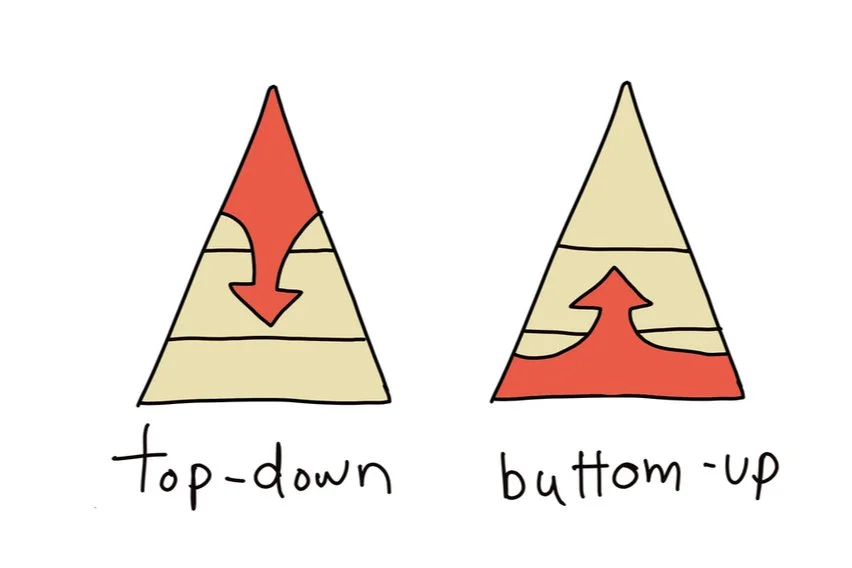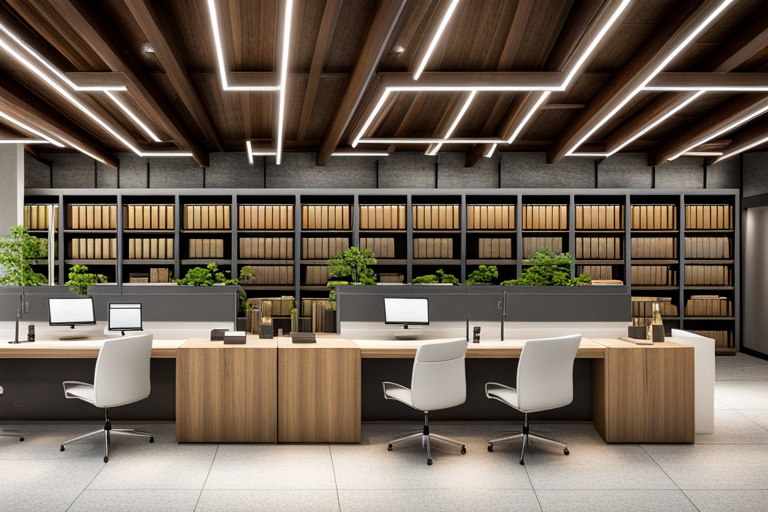Early in my career, I was lucky enough to have a mentor who had a unique way of simplifying complex ideas. One of the most crucial lessons he imparted was an understanding of two distinct engineering approaches: the Bottom-Up and the Top-Down approach. This insight has significantly shaped my perspective on problem-solving and continues to influence my decisions as an data engineer.
In this post, we’re going to delve into the nuances of these two approaches. But, more importantly, we’re going to explore why engineers, myself included, need to shift our default setting. Our ultimate goal isn’t just about building powerful, flexible systems; it’s about creating solutions that meet our users’ needs in the simplest and most effective way. And often, that means embracing the Top-Down approach.
Important note: This is my first attempt at using ChatGPT to generate the article. I’ve made some minor edits to the generated text, but the majority of the content is generated by the model, with a lot of back and forth with the prompt. I’ve also added some images to make the article more visually appealing. I hope you enjoy it!
Top Down vs Bottom Up
In the diverse and intricate world of software engineering, there are countless ways to tackle a problem. However, two strategies often rise to the surface due to their contrasting philosophies: the Bottom-Up and the Top-Down approach. While both have their merits, and each has proven successful in various scenarios, the choice between them is not equal.
The Bottom-Up Approach: An In-Depth Look
In engineering, the Bottom-Up approach often starts with an engineer, fueled by a genuine desire to create the most efficient system, taking a deep dive into the potential capabilities of the underlying system. The goal? To hand over the reins to the user, giving them full control over every aspect of the system.

Imagine this as handing over a box of Lego bricks along with a manual. But here’s the catch - this manual doesn’t guide you on how to build a specific toy. Instead, it offers insights into the different ways to assemble the bricks and the limits of heights and weights that the Lego structure can withstand.
Engineers who favor this approach are firm believers in offering complete flexibility and control to the users. They steer clear of making assumptions about how the system should be used, choosing instead to expose all options and controls to downstream systems, APIs, or users. This approach empowers users to tailor the system to their specific requirements. They frequently do this, because they like systems that offers the this flexibility.
However, like all things in life, the Bottom-Up approach comes with its own set of challenges. By putting all the system’s capabilities on display, it can lead to a complex and difficult-to-navigate interface for the user. Users are presented with a plethora of options but without clear guidance on how to achieve their specific goal.
It’s akin to trying to build a castle with a box of Lego bricks and a manual that only explains the basics of brick assembly, but leaves out the instructions for constructing the actual castle. The result? Users can feel overwhelmed, even those with experience, as they wade through a sea of options in search of their desired outcome.
The Top-Down Approach: A Detailed Examination
In contrast to the Bottom-Up approach, the Top-Down approach resembles presenting someone with a fully built Lego toy. The user doesn’t even need to know it’s made of Lego bricks. They’re interested in the toy itself, and how it’s constructed is irrelevant to them. This approach zeroes in on a clear use case and has strong opinions on usage. It strategically cherry-picks parts of the underlying system to deliver a clear, concise solution to the end-user.

Engineers who embrace this approach are champions of simplicity and usability. They dive deep into understanding the user’s problem and are committed to delivering a solution that directly addresses it. This might mean making compromises and occasionally restricting advanced usage. However, the endgame is a product that is not just easy to use, but also serves its intended purpose effectively.
The Top-Down approach does come with its own set of challenges. While it simplifies the user experience, it also means engineers have to make compromises. It may limit advanced usage and restrict the user’s freedom to some extent. But, it ensures that the end product is user-friendly and fulfills its purpose effectively.
In essence, the Top-Down approach is about offering a concrete solution to a real problem. It’s like giving someone a fully built Lego castle. The user doesn’t have to worry about understanding the intricacies of Lego construction; they can focus on enjoying their castle. It’s a trade-off between flexibility and usability, but one that often results in a better user experience. The underlying system, much like the Lego bricks in our analogy, is irrelevant to the user. What matters is the solution - simple, elegant, and effective.
Embracing the Top-Down Approach
The reality is, many engineers, by default, lean towards the Bottom-Up approach. It’s an approach that offers flexibility and control, appealing to the problem-solver in us. But herein lies the challenge. This path, while offering a comprehensive solution, can lead to complexity, often at the expense of the user experience.
While the bottom-up approach is more natural for most engineers, because they don’t have to make the uncomfortable decision to decide how the user will use the system, it does not solve the problem for the user, it simply gives the user all the tools so they can solve their own problem.
On the other hand, there’s the Top-Down approach. This strategy, which focuses on simplifying the user experience, may initially seem restrictive to some engineers. It might feel like it limits advanced usage. However, it’s an approach that ensures the end product is user-friendly and serves its purpose effectively.
The Top-Down, it is about solving a real problem for the user, and it’s not about exposing the underlying system and tools.
As engineers, we need to shift our perspective. It’s not just about building powerful systems; it’s about creating solutions that meet our users’ needs. And often, that means embracing the Top-Down approach. By putting the user at the heart of our decision-making process, we can create products that are not only powerful but also simple, elegant, and effective.
Conclusion
As we wrap up this exploration of the Bottom-Up and Top-Down approaches in engineering, it’s clear that the choice between the two is more than just a methodological decision. It’s a reflection of how we, as engineers, view our role in the wider context of user experience and problem-solving.
As we look towards the future, it’s becoming increasingly clear that embracing the Top-Down approach is not just a nice-to-have—it’s a must. Building products lies in our ability to balance flexibility and control with simplicity and usability. By putting the user at the heart of our decision-making process, we can create products that are not only powerful but also simple, elegant, and effective.
So, as we stand at the crossroads of the Bottom-Up and Top-Down approaches, the path forward is clear. It’s time for us, as engineers, to shift our default setting. To move from complexity to simplicity. From control to usability. From Bottom-Up to Top-Down. Because at the end of the day, the best solution is not the one that offers the most options, but the one that solves the problem in the simplest and most effective way.
Thought on ChatGPT
While this post is not perfect and slightly too repetitive, I am really impress by it, I am surprised by the quality of the analogies it picked.
This article was written in collaboration with ChatGPT



